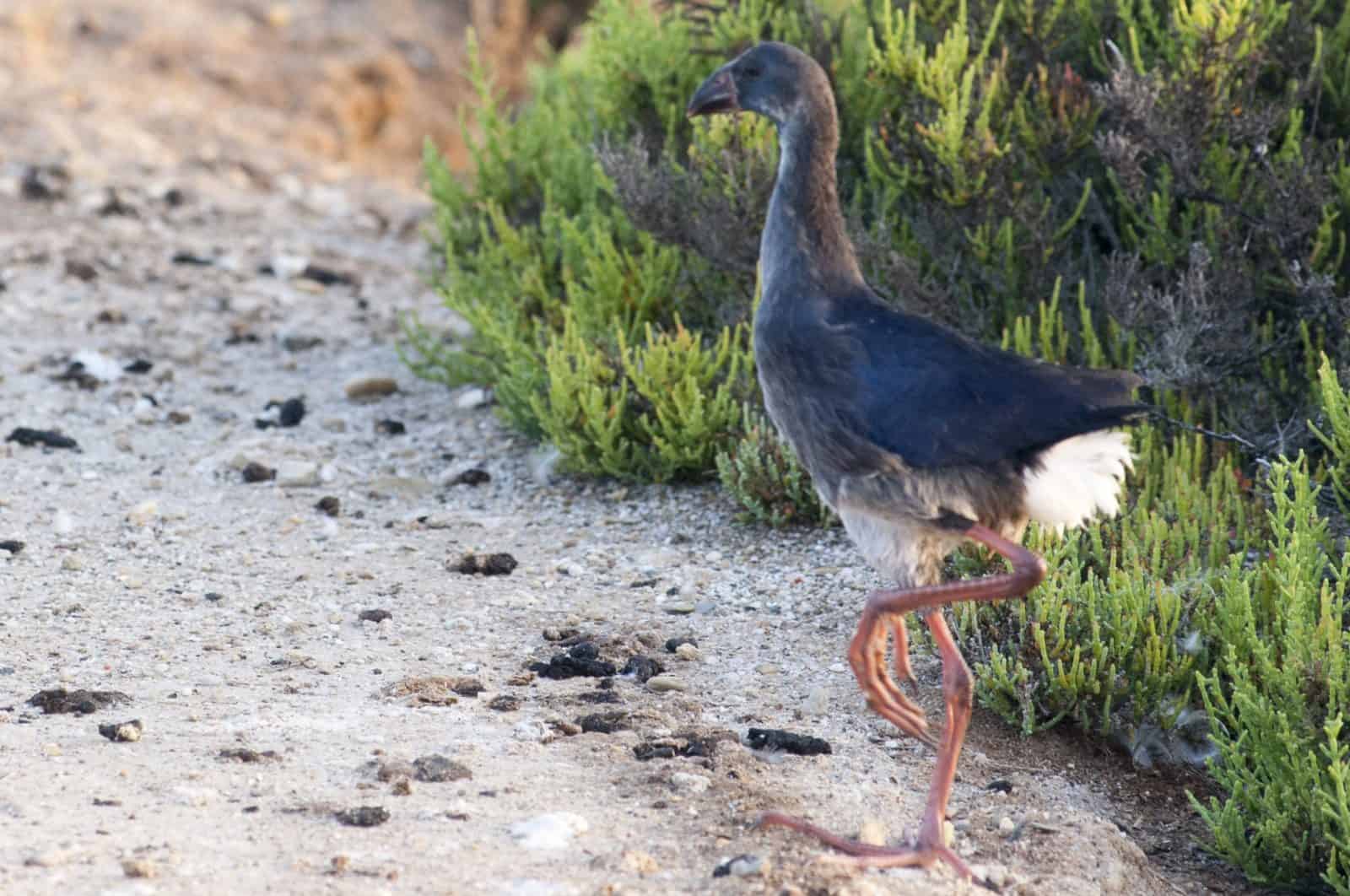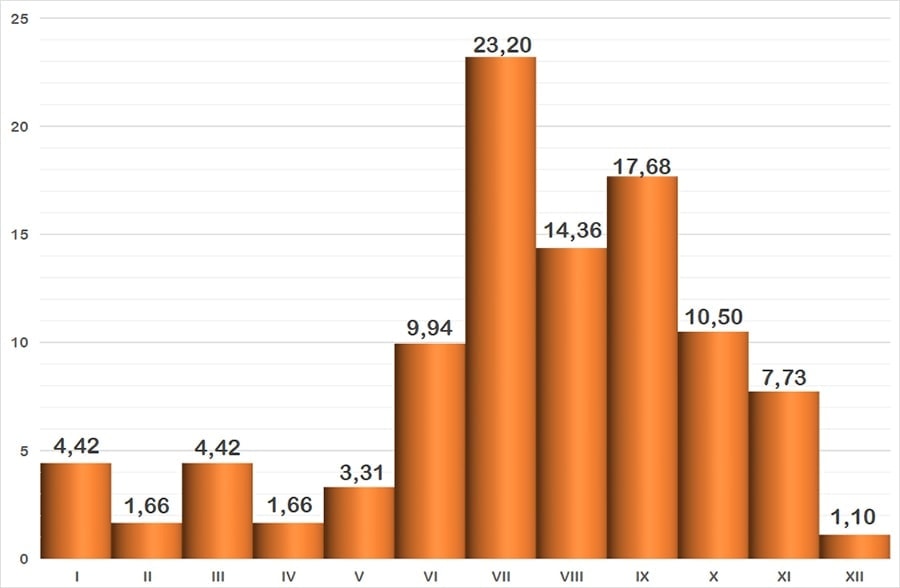Some of its behaviour, and even its silhouette, is reminiscent of the Common moorhen although it differs markedly from the latter in size, it is as big as a hen. The Purple Swamphen has a striking and lustrous bluish colour, which has earned it the nickname in some places of “Blue Rooster”. It contrasts with its red legs, endowed with long, lobed toes and its red head and forehead. It has striking and contrasting white feathers under its tail and on its back.

Species 1
Purple Swamphen
Scientific name
Family 2
Taxonomic Affinity Group 3
Phenology 4
It is a resident bird in the ‘Salinas de Poniente’ and in the ‘Ribera de la Algaida’, being more detectable the summer and autumn.
The first list of protected species in Spain, in the mid-80s of the twentieth century, included this then rare bird, today it is more common, although BirdLife considers, although present in Europe, it a species whose conservation status is unfavourable, even to the stage of being considered a rare and localized bird, and of special interest in Andalusia. Currently, it seems to making a recovery, in fact, it was an exceptional bird to see in these wetlands in the late twentieth century.

The graph represents the probability of seeing a species during the year, grouped into months. The vertical axis indicates the percentage value. Each of the bars expresses its value. The horizontal axis represents the months: I = January, II = February, III = March, IV = April, V = May, VI = June, VII = July, VIII = August, IX = September, X = October, XI = November and XII = December.
Observation recommendations
It is difficult to spot, it can be detected between the reeds and the water, at the edge of both, walking among the reeds.
Observation areas where we can find it
Notes
[1] The names used are from the list of birds of Spain, drawn up by SEO/BirdLife and updated to 2019 (https://seo.org/listaavesdeespana/). The reference is: Rouco, M., Copete, J. L., De Juana, E., Gil-Velasco, M., Lorenzo, J. A., Martín, M., Milá, B., Molina, B. & Santos, D. M. 2019. Checklist of the birds of Spain. 2019 edition. SEO/BirdLife. Madrid.
[2] The taxonomic family to which it belongs is indicated.
[3] Traditionally, waterbirds have been grouped according to their taxonomy or “taxonomic affinity”, i.e., when some birds coincide in certain features that allow them to be classified scientifically, but without leaving the rigour of science, they are put together in these groups so that they can be easily recognised. These groups are the following: Greves (belonging to the Podicipedae family), Herons and Similar (includes the families: Ardeidae -Herons- Ciconiidae -Storks- and Threskiornithidae -Ibises and spoonbills-), Ducks (the whole Anatidae family), Coots and Similar (the family Rallidae corresponding to Rails, Gallinules and Coots), Cranes (also with only one family, the Gruidae), Waders , a heterogeneous group, the most diverse of this classification, includes the families Burhinidae (Stone-curlews), Haematopodidae (Oystercather), Recurvirostridade (Avocets and Stilts), Glareolidae (Pranticole), Charadriidadea (Plovers), Scolapacidae and finally Gulls and Similar (the recently unified family Laridae, i.e. Gulls and Terns).
[4] Phenology studies the relationship between the cycles of living beings and meteorological factors, and in our latitude these factors manifest themselves as variations throughout the year, thus relating the seasons to the birds’ cycles (breeding, migratory journeys, etc.) The graph shows the probability of seeing a bird depending on the month. It uses data from 48 bird censuses carried out between October 2016 and September 2018. The method used is that of a census route with sampling stations, with a total count on the sheet of water.
